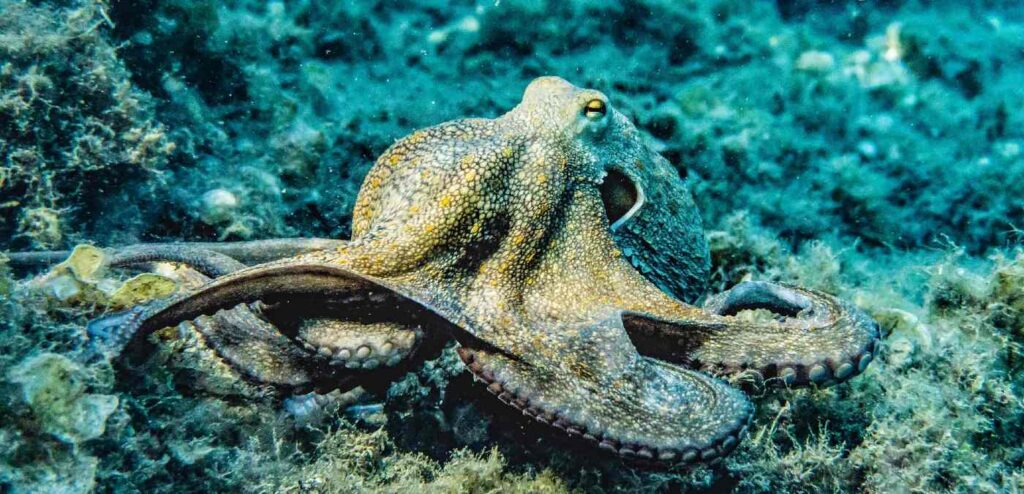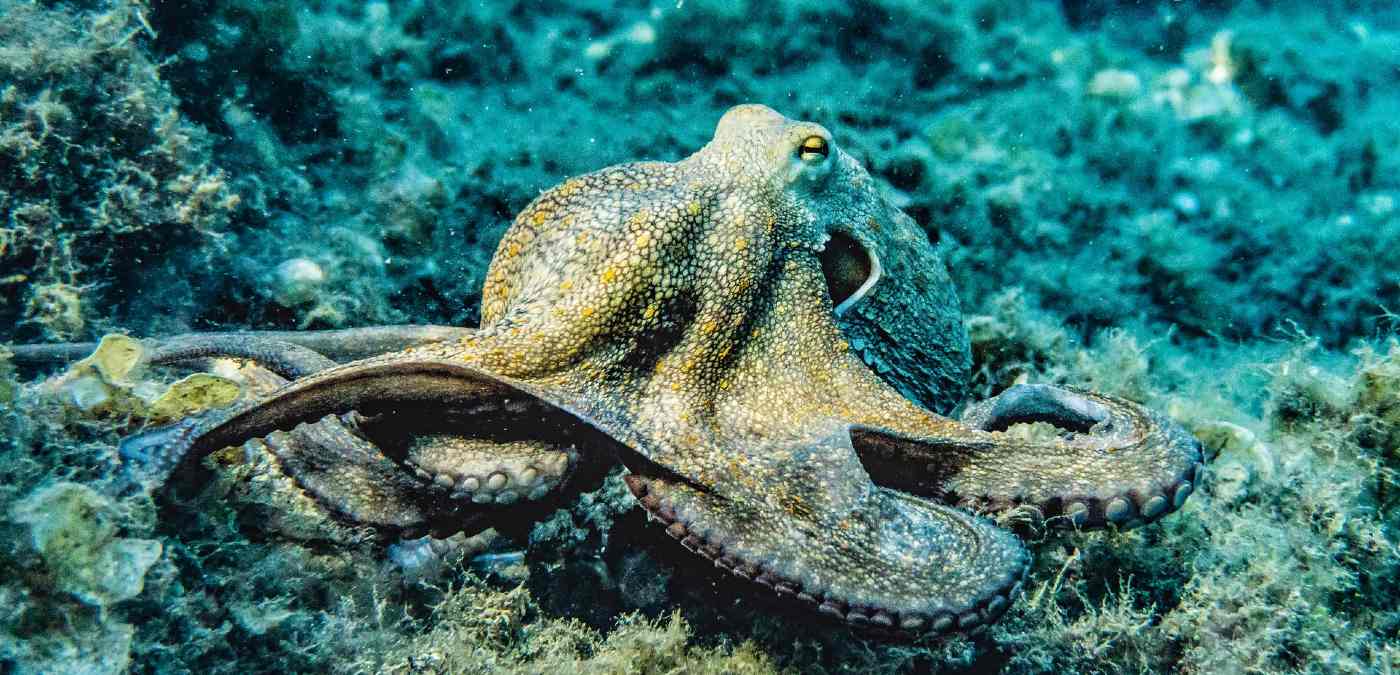Swat a fly; who cares, it’s not like they have feelings. Or do they?
Jonathan Balcombe is an English ethologist—a studier of animal behavior—and has published several books on the subject, the most recent of which was called Super Fly: The Unexpected Lives of the World’s Most Successful Insects.
In it, he begins to try and unravel our natural born prejudice towards anything with more than two legs, and shows that many of the most well-established intelligence tests we use for mammals and birds can also be passed by bugs and cephalopods.
In a Literary Hub excerpt, he argues that this should at least leave us revisiting whether these tests prove intelligence as such, or if we need to reexamine the concept of animal intelligence at large.
Let’s take a look at just how intelligent invertebrates really are.
Bees

Bees are known to have a mind-bogglingly complex sensory interconnectivity through the use of pheromones that allows them to seemingly move as if controlled by a single mind.
And yet individual bees can recognize individual human faces. They understand the concepts of something “same” and something “different,” which was demonstrated in tests with shapes and colors.
Honeybees seem to know they know things as well: One cited study suggested bees would not participate in tasks that were very difficult if failure meant receiving a bitter tasting liquid at the end. Researchers took this to mean the bee would only participate in tasks it knew it was capable of finishing.
LOOK: Flowers Can Hear Buzzing Bees—And it Makes Their Nectar Sweeter
Wasps
Low on the sting-o-meter, paper wasps score high on other tests, such as the ability to recognize individual members of their colony by the distinct marks on their little heads. By digitally altering features of a colony-member’s face, researchers were able to observe that they would choose their comrade’s face over the doctored image.
Tool-use, a generally accepted form of higher intelligence, is found in digger wasps, who, after paralyzing their prey, bury it underground and use flat stones to tamp down the dirt they moved in order to disguise it from other insects that have learned an easy meal lies within the borrow.
One of the distinguishing features here is that they selected flat stones in particular, and not any such hard object, such as a nut, that might have been lying around.
Ants
Ants can recognize themselves in a mirror.
We’re not kidding. In what Balcombe describes as his favorite insect intelligence test, Brussels researchers found ants behaved differently when looking at their own face in a mirror than colony mates viewed through a pane of glass. This “MSR” test was the same one that caused a scientific reevaluation in the ’70s when chimpanzees were found to do the same.
When a blue dot was applied to their forehead, the ants, upon seeing themselves in the mirror, and like so many humans before going out in public, busily scrubbed away until the pesky stain was removed. This preening wasn’t observed if the blue dot was placed on the back of their head where they couldn’t see, or if it was applied and they were not given a mirror to gaze into.
Since 1970, just apes, dolphins, elephants, magpies, and as Balcombe points out, a type of cleaner fish, have passed this test.
RELATED: Size Doesn’t Matter to a Dolphin Mom As She Adopts a Whale Calf
Octopuses

This animal has garnered a lot of attention recently through a string of now-iconic videos on YouTube, as well as from several experts talking to the eclectic mind of America’s biggest broadcaster: Joe Rogan.
An octopus can open child-proof containers and untie knots, is a master of escape, has emotion, and demonstrates play behavior. They even have unique personalities, and can actually learn skills by watching others.
This has led researchers to suggest that, given the evolutionary distance between mammals and octopuses, consciousness was first developed by the eight-legged curiosities, and that therefore, consciousness has evolved on Earth on two separate occasions at least.
Spiders
We saved this species for last so that arachnophobes who may not enjoy hearing that spiders are more intelligent than we thought can leave having enjoyed the rest of the article.
MORE: New Research Shows Why Crows Are So Intelligent and Even Self-Aware—Just Like Us
Object permanence was found in various jumping spider species when researchers observed them moving out from behind a rock if a prey species passed out of sight behind it. They knew the prey was still there, it’s just that something was blocking its view.
Spiders, again the jumping variety, were also found to display very advanced methods of approach, and would back away from its prey if it thought it had a better chance of approaching undetected elsewhere.
The reason this was found in jumping spiders and not those that rely on ambush, like trapdoor or web-weavers, could be the same reason that wolves and leopards are smarter than crocodiles.
Actively seeking and stalking requires complex sensory and mental arrays to parse information from the environment in order to avoid detection, whereas a camouflaged lizard or spider need only wait until something wanders close enough to its mouth.
In his book, Balcombe quotes Jane Goodall’s professor in the moments after he learned of her documenting of advanced tool use in chimps: “Now we must redefine tool, redefine Man, or accept chimpanzees as humans.”
Perhaps it’s time we do a little redefining in invertebrates. If you’d like, you can take a look at and order Balcombe’s new book here. (His 2016 book is What a Fish Knows: The Inner Lives of Our Underwater Cousins.)
SHOW Pals the Intelligence of Others—Share This Story…




















